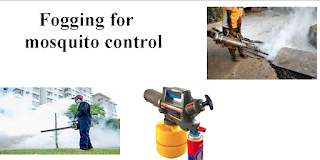MOSQUITO CONTROL IN CONSTRUCTION SITES
Controlling mosquito breeding in cities is quite difficult task, but it can be done. How?
The main target is Construction sites, The Mosquito breeding takes place in stagnant water, during construction of buildings, the water is used for curing is stagnated in basement, sunkens and also in the lift ducts. The Health departments of the construction sites may put some guys to find the mosquito breeding areas and spraying of pesticide will be done. The Multi National Companies like CCCL, Mfar Constructions, Onshore Constructions will take care to prevent mosquito breeding and the Diseases like Malaria and Dengue is less in these company labours. But the local companies does not take care to prevent mosquito breeding so the diseases like Malaria and Dengue spread over the cities. The city Municipalities take necessary action to stop mosquito breeding. Weekly visit to all construction sites by the city corporation helps to prevent these killer diseases.
Removal of water stagnation weekly or twice a week is better to avoid mosquito breeding
The main target is Construction sites, The Mosquito breeding takes place in stagnant water, during construction of buildings, the water is used for curing is stagnated in basement, sunkens and also in the lift ducts. The Health departments of the construction sites may put some guys to find the mosquito breeding areas and spraying of pesticide will be done. The Multi National Companies like CCCL, Mfar Constructions, Onshore Constructions will take care to prevent mosquito breeding and the Diseases like Malaria and Dengue is less in these company labours. But the local companies does not take care to prevent mosquito breeding so the diseases like Malaria and Dengue spread over the cities. The city Municipalities take necessary action to stop mosquito breeding. Weekly visit to all construction sites by the city corporation helps to prevent these killer diseases.
Removal of water stagnation weekly or twice a week is better to avoid mosquito breeding
GUPPY FISH TO CONTROL MOSQUITO BREEDING/ MALARIA
Guppy fish have been proved to be useful in malaria control in studies elsewhere in India
1. In a study done at Goa, India, it was found that the incidence of malaria dropped within a year in the village where they used only biolarvicides, but it increased in the other villages where DDT was continued
2. In mangalore City also it is used in construction sites to reduce mosquito breeding.
3. We can use it in Ponds and water stagnated area for long time to prevent Mosquito breeding
1. In a study done at Goa, India, it was found that the incidence of malaria dropped within a year in the village where they used only biolarvicides, but it increased in the other villages where DDT was continued
2. In mangalore City also it is used in construction sites to reduce mosquito breeding.
3. We can use it in Ponds and water stagnated area for long time to prevent Mosquito breeding
Mosquito Killing INSECTICIDES
Insecticides can be used to stop mosquito breeding in water stagnation areas like construction sites, tyres, unwanted materials stacks. There are four class of insecticides currently used in the control of malaria carrying mosquitoes (vectors): organochlorines, organophosphates, carbamates and pyrethroids. The 12 insecticides in all four classes are recommended for use in indoor residual spraying (IRS), whereas only pyrethroids are currently recommended for use in long-lasting insecticidal nets (LLINs).Fogging
Fogging is a technique used for killing insects that involves using a fine pesticide spray (aerosol) which is directed by a blower. In some cases, a hot vapour may be used to carry the spray and keep it airborne for longer. Fast-acting pesticides like pyrethroids are typically used. This is widely used for sampling or studying insects in the canopy of tall forests which cannot be effectively reached. The floor below the trees are lined with plastic sheets and the fog causes insects to fall in the rain. These are collected for later study in the laboratory
Fogging is also one of the best method to control mosquitoes in construction sites. Fogging can be done using chemicals like Cyclomethrin 50%EC
Malaria Fever can be prevented only by stopping the breeding of Anaphilis Mosquitoes. So Insecticides can be used to stop mosquito breeding in water stagnation areas like construction sites, tyres, unwanted materials stacks.
There are four class of insecticides currently used in the control of malaria carrying mosquitoes (vectors): organochlorines, organophosphates, carbamates and pyrethroids. The 12 insecticides in all four classes are recommended for use in indoor residual spraying (IRS), whereas only pyrethroids are currently recommended for use in long-lasting insecticidal nets (LLINs).
The following measures can be taken to control mosquito in construction sites/ labour camps.
- Remove Stagnant water from the labour camp
- Remove tires and waste bottles thrown out, there may be the chance of water stagnation and cause mosquito gowth.
- Clean the water tanks weekly twice or at least once in a week
- Fogging can be done in the evening time.
- Pesticide spray in labour camps and project site may helps in max to prevent mosquito breeding.
Site Safety officer/ Safety In-charges are responsible to prevent Mosquito breeding at Construction sites, Good House keeping helps to stop Mosquito breeding.

